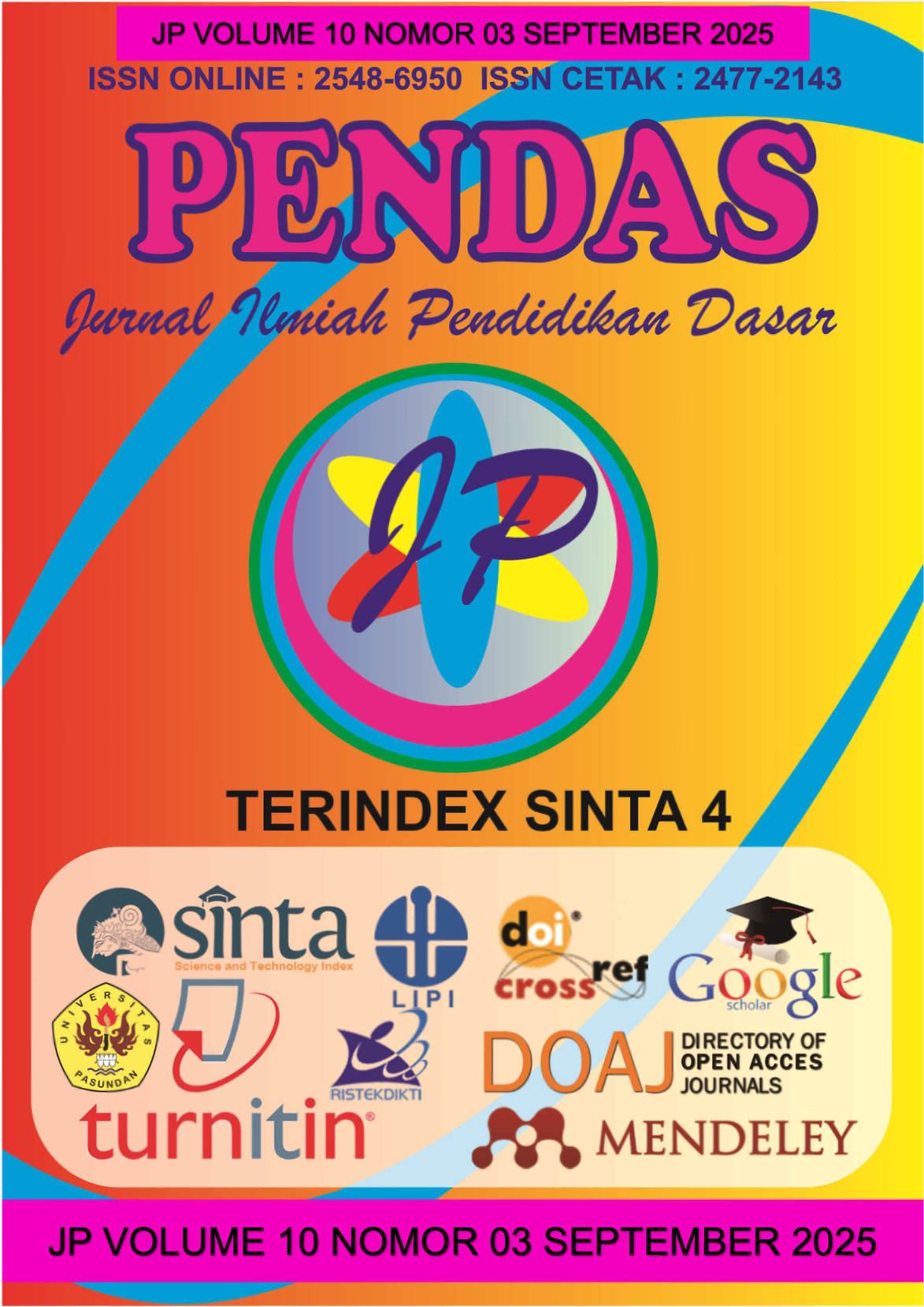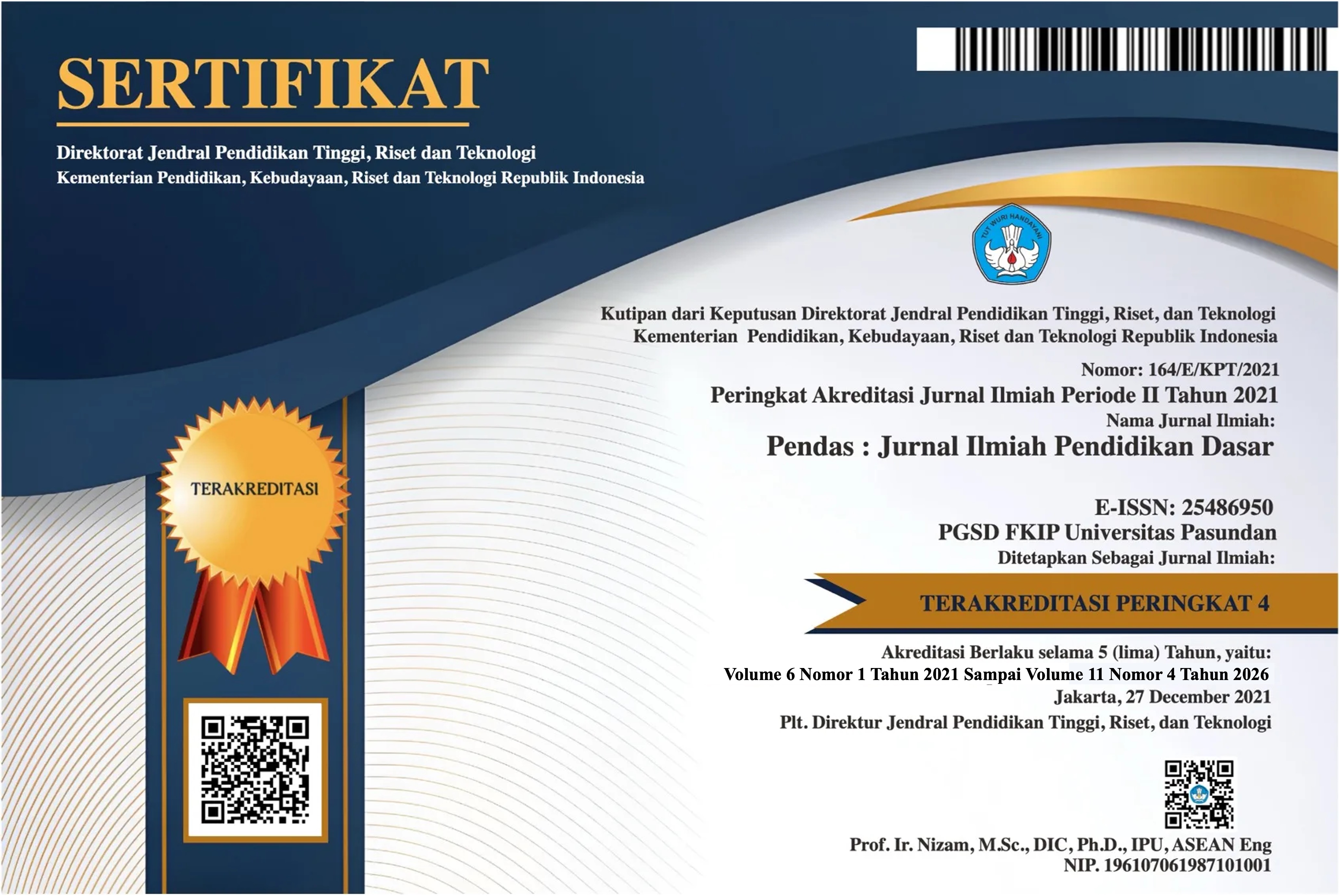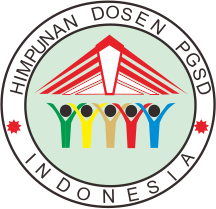PERSEPSI GURU DAN SISWA TERHADAP MEDIA WORDWALL SEBAGAI APLIKASI PEMBELAJARAN IPA KELAS VIII DI SMP NEGERI 26 MAKASSAR.
DOI:
https://doi.org/10.23969/jp.v10i03.31496Keywords:
Wordwall, Evaluation Media, Teacher and Student PerceptionsAbstract
This study aims to explore the perceptions and experiences of teachers and
students regarding the use of Wordwall as an evaluation medium in eighth-grade
science learning at SMP Negeri 26 Makassar. This study started from the problem
of the need to increase student engagement and the effectiveness of feedback in
traditional evaluation methods. Conducted for one month starting on March 14,
2025, this study used a qualitative approach. Data collection was conducted
through direct observation of the use of Wordwall in class, in-depth interviews with
one science teacher and eight eighth-grade students from different backgrounds,
and documentation analysis. Data were analyzed systematically through the
stages of data reduction, data presentation, and conclusion drawing. Data validity
was maintained through source triangulation techniques, member checks (data
confirmation with participants), and audit trails. The results showed that the use of
Wordwall as an evaluation medium in the science learning process had a positive
impact, especially increasing student interactivity and motivation. Both teachers
and the majority of students considered this media able to make the evaluation
process more interesting, interactive, and fun thanks to gamification features such
as quizzes and interactive puzzles, as well as fast automatic feedback. This
significantly helped students in understanding science material. However, this
study also identified technical challenges in the form of unstable internet
connections and limited devices, which were major barriers to implementation.
Students perceptions of the use of Wordwall varied; most reported increased
motivation and enthusiasm, while others felt the effect was neutral. Some
suggestions for improvement included adding a variety of questions, providing
explanations after completing the questions, and enhancing the interface to make
it more interactive.
Downloads
References
Lyznicki, J. M., Young, D. C., Riggs,
J. A., Davis, R. M., & Dickinson, B.
D. (2001). Obesity: Assessment
and management in primary care.
American Family Physician,
63(11), 2185-2196.
Mandar, Y., & Sihono. (2025).
Implementasi Teori
Konstruktivisme dalam PAI:
Kajian Teori Jean Piaget dan
Jerome Bruner. Jurnal Tarbiyah
Islamiyah, 10(1), 223–237.
Mella, B., Wulandari, I. G. A. A., &
Wiarta, I. W. (2022). Bahan Ajar
Digital Interaktif Berbasis
Problem Based Learning Materi
Keragaman Budaya. Jurnal
Penelitian dan Pengembangan
Pendidikan, 6(1), 127–136.
https://doi.org/10.23887/jppp.v6i1
.46368
Nurbudiyanti, W., Rizqia Amalia, A., &
Azwar Uswatun, D. (2022).
Upaya Meningkatkan Motivasi
Intrinsik Siswa Ips Sekolah
Dasar Dengan Media
Pembelajaran Danger Spin.
Pendidikan Ilmu Pengetahuan
Sosial Indonesia, 7(3), 232–244.
Purba, A., & Saragih, A. (2023).
Peran Teknologi dalam
Transformasi Pendidikan Bahasa
Indonesia di Era Digital. All
Fields of Science Journal Liaison
Academia and Sosiety, 3(3),
43–52.
https://doi.org/10.58939/afosj-
las.v3i3.619
Romadhona, A. R., Prameita, A. E.
D., Alvianita, M., Adha, E. A. W.,
& Iffah, J. D. N. (2023). Analisis
Teori Belajar Konstruktivisme
Dalam Pembelajaran Matematika
Di Sma Budi Utomo Perak.
Laplace : Jurnal Pendidikan
Matematika, 6(1), 11–21.
https://doi.org/10.31537/laplace.v6i1.1097
Saputra, J., & Pongoh, F. D. (2025).
Pengaruh Penggunaan Media
Pembelajaran Wordwall terhadap
Motivasi Belajar Siswa
Pendidikan Agama Kristen di
SMAN 5 Palangka Raya.
Suwarno, M. (2020). Cognitive Load
Theory in The Development of
Multimedia Mathematics
Learning. Alauddin Journal of
Mathematics Education Journal
homepage, 2(2), 117–125.
Downloads
Published
Issue
Section
License
Copyright (c) 2025 Pendas : Jurnal Ilmiah Pendidikan Dasar

This work is licensed under a Creative Commons Attribution 4.0 International License.



















